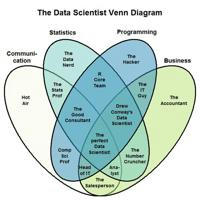
Data Scientology
Hot data science related posts every hour. Chat: https://telegram.me/r_channels Contacts: @lgyanf
Більше- Підписники
- Перегляди допису
- ER - коефіцієнт залучення
Триває завантаження даних...
Триває завантаження даних...
Explore this post and more from the LanguageTechnology community
Explore this post and more from the MachineLearning community
Explore this post and more from the deeplearning community
Explore this post and more from the computervision community
Lightning-Fast Text Classification with LLM Embeddings on CPU - EveripediaNetwork/fastc
A new lightweight open-source foundation model - tutorial included
In this video, we explore the critical concept of the receptive field in convolutional neural networks (CNNs). Understanding the receptive field is essential for grasping how CNNs process images and detect patterns. We will explain both the theoretical and effective receptive fields, highlighting how they influence network performance and design. We start by defining the receptive field and its importance in CNNs, demonstrating how it grows with each convolutional layer. We'll use examples to compute the receptive field for different network configurations and show how pooling layers can significantly expand it. Finally, we'll delve into the differences between theoretical and effective receptive fields, providing insights on how CNNs utilize information during training. If you want to dive deeper into the topic of the receptive field, here are some references that you might find useful: -
https://arxiv.org/abs/1701.04128-
https://theaisummer.com/receptive-field/-
https://distill.pub/2019/computing-receptive-fields/Chapters: 00:00 Intro 01:10 Receptive Field Basics 03:00 Receptive Field Calculation 05:14 Example Network Analysis 06:12 Pooling Layers 07:18 Effective Receptive Field 10:15 Outro This video is animated using Manim, the Python animation library created by Grant Sanderson from @3blue1brown. Remember to like and subscribe to support the channel. #artificialintelligence #animation #deeplearning #ai #convolutionalneuralnetworks #receptivefield #python #tutorial
Explore this post and more from the LanguageTechnology community
На вашому тарифі доступна аналітика тільки для 5 каналів. Щоб отримати більше — оберіть інший тариф.
